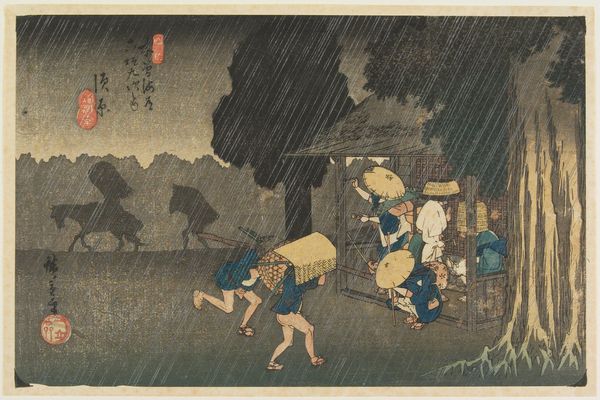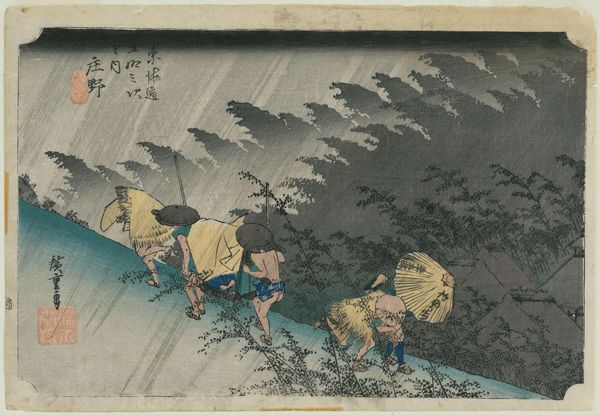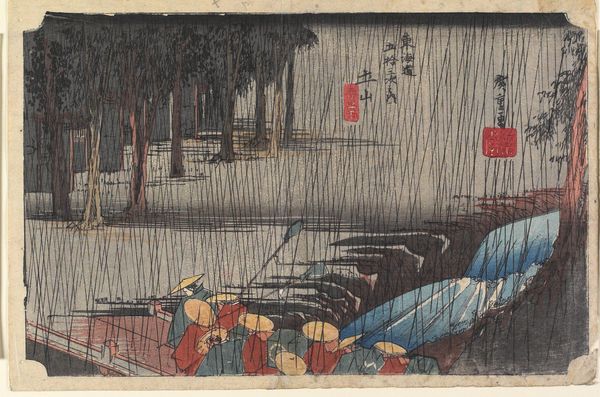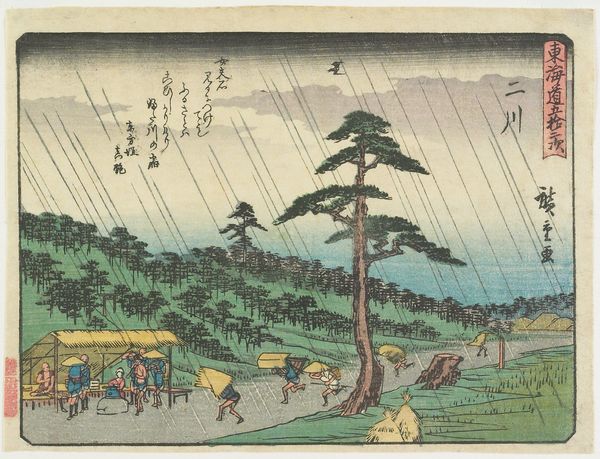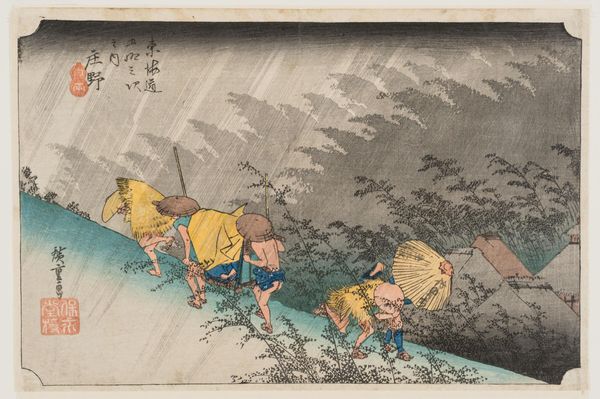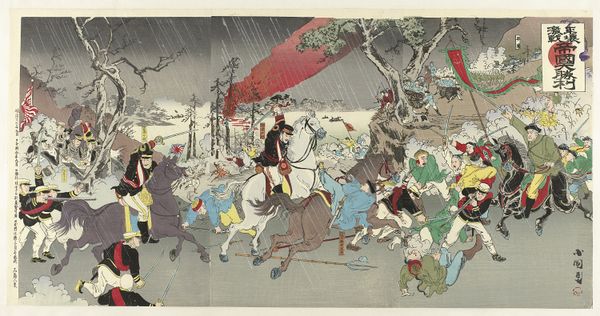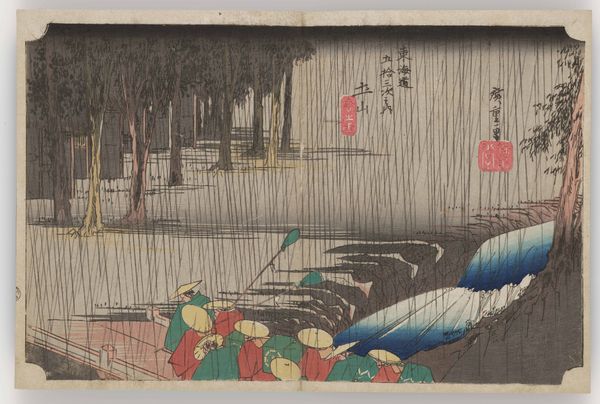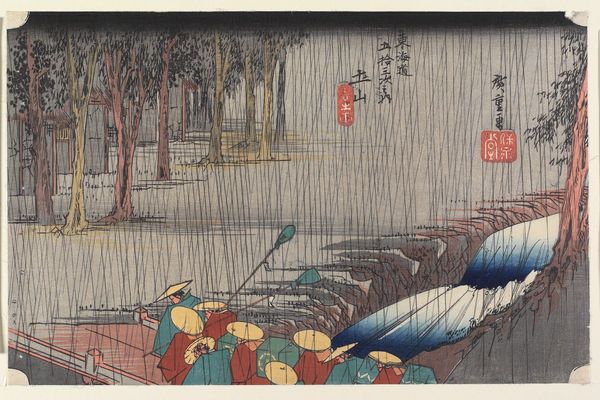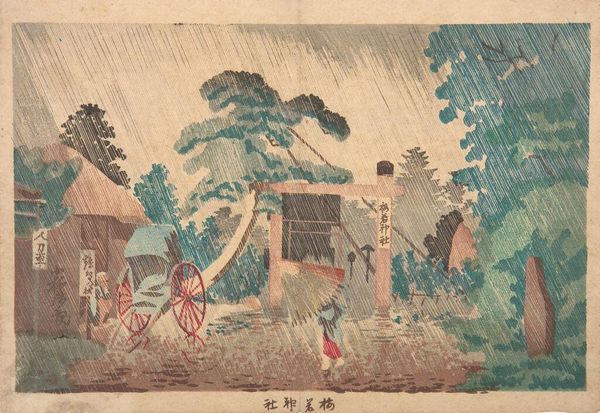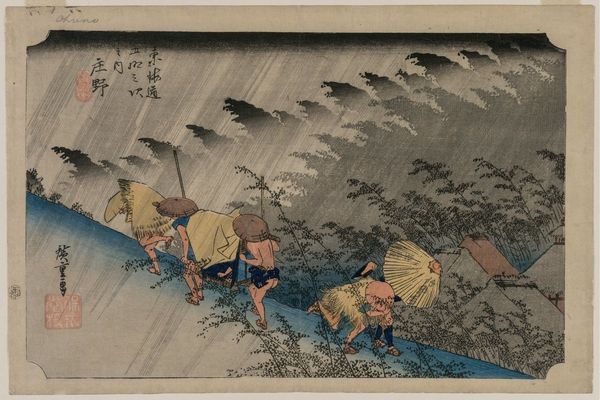
Suhara, from the series Sixty-Nine Stations of the Kisokaido c. 1835 - 1836
0:00
0:00
print, woodblock-print
# print
#
asian-art
#
landscape
#
ukiyo-e
#
woodblock-print
Copyright: Public Domain: Artvee
Curator: This woodblock print is titled "Suhara, from the series Sixty-Nine Stations of the Kisokaido" and it comes to us from Utagawa Hiroshige around 1835 or 1836. What’s your first impression of this work? Editor: It's the rain, isn't it? It's coming down so hard, blurring everything. There's a sense of urgency as travelers scramble for shelter; a temporary refuge on a well-traveled road. It gives me a deep feeling of isolation and also an acknowledgement of a common experience in shared plight. Curator: That’s a fantastic reading. Hiroshige uses these strong, almost brutal vertical lines to depict a torrential downpour. In Japanese art and culture, rain isn't just water falling from the sky; it's cleansing, renewal, and a powerful emotional force. Editor: And the figures are compelling. We have those on the left side bravely pressing on despite the weather. And then to the right the people who’ve made it to some form of respite. There’s such disparity and also community. I see how shelters like this became not just places of physical rest but of social exchange and temporary egalitarianism in their time. Did the social stratification of the time become paused by a powerful rain like this? Curator: It’s an intriguing question. Hiroshige doesn't offer us clear portraits. Faces are hidden, blurred by the rain, turned away. These figures become universal. The thatched hats symbolize a shared journey, shared vulnerability, even a shared anonymity against the elements and systems of the state. Editor: Yet, each seems weighed down differently. Some hurry towards a dry space, perhaps a break from societal and also economic burden, while the forms continuing into the rainfall are weighed by unknown forces, either their economic necessity to arrive at an intended point, or maybe their social obligation. Do you feel this sense? Curator: I do, it's compelling. The hurried, slightly frantic movement contrasts with the still, almost dreamlike quality of the downpour itself. It mirrors the eternal tension between humans battling against nature and attempting to find harmony with it. Even in the heaviest storms there are shared realities, shared burden, shared destinations. It really encapsulates the essence of the journey, doesn't it? The destination is just half the experience, and how lovely is Hiroshige here making a part of the story that is just weather. Editor: Yes, even in our modern, digitized and individualized experience, our shared public crises continue. Thank you for showing me that the visual record of human activity never really escapes our history and becomes permanently a part of our current consciousness.
Comments
No comments
Be the first to comment and join the conversation on the ultimate creative platform.

